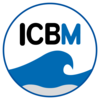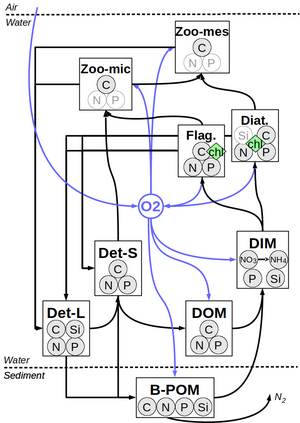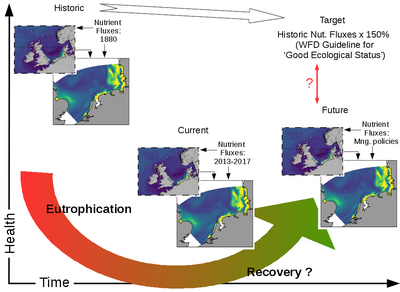Prof. Dr. Bernd Blasius
Institut für Chemie und Biologie des Meeres (ICBM) (» Postanschrift)
Generalized Plankton Model
Generalized Plankton Model is being developed within the Framework for Aquatic Biogeochemical Models (FABM, Bruggeman and Bolding, 2014). Its ‘generality’ is owed to i) modularity of the model; which allows including/excluding plankton modules in run time, such that various food web structures can be mimicked; ii) a generic plankton model that can be configured as a phytoplankton, zooplankton, or any mix in between; iii) options to specify the degree of physiological flexibilities, such as constant vs. variable Chl:C:N:P ratios of plankton.
The GPM roots back to a C- and P- resolving lake model (Kerimoglu et al. 2017) , which have been since then extended to resolve N- and Si- cycles, variable Chl:C ratios of phytoplankton and a simple sediment module (Kerimoglu et al. 2020), for an application to the southern North Sea to study the interactive effects of the meteorological and hydrological conditions on the physics and biogeochemistry of the system.
Example Applications
GPM has been applied for studying the eutrophication of the southern North Sea. The system was heavily eutrophied as of late 80s, and has been in a recovery trend since then, thanks to the reductions in especially P, and to a limited extent, N loads. However, there is evidence that the certain areas of the system is not yet satisfying a ‘Good Environmental Status’ according to the Marine Strategy Framework Directive (MSFD). Setting the target state of the system is an ongoing process, in which we are actively participating, in collaboration with researchers in the neighboring countries such as the Netherlands (in the frame of the InterReg project), and inter-model comparison projects such as those coordinated by the OSPAR commission. Here, the general idea is to identify and refer to a minimally disturbed, historical state of the system and do this in a multi-model ensemble framework, in order to minimize the uncertainties that might be caused by model biases (e.g., Stegert et al. 2021).
These models can also be applied for assessing the potential of certain management actions. In a recent example, we participated in an initiative where the aim was to gain insight into the response of European marginal seas if technical measures, such as improvement of wastewater treatment plants, and optimization of mineral fertilization, were to be implemented to a higher feasible degree (Friedland et al. 2021).
Further Information:
InterRegStegert et al. (2021) Evaluating Uncertainties in Reconstructing the Pre-eutrophic State of the North Sea. Friedland et al. (2021) Effects of Nutrient Management Scenarios on Marine Eutrophication Indicators: A Pan-European, Multi-Model Assessment in Support of the Marine Strategy Framework Directive.
Further Information:Bruggeman and Bolding (2014) A general framework for aquatic biogeochemical models. Kerimoglu et al. (2017) Modelling the plankton groups of the deep, peri-alpine Lake BourgetKerimoglu et al. (2020) Interactive impacts of meteorological and hydrological conditions on the physical and biogeochemical structure of a coastal system.





